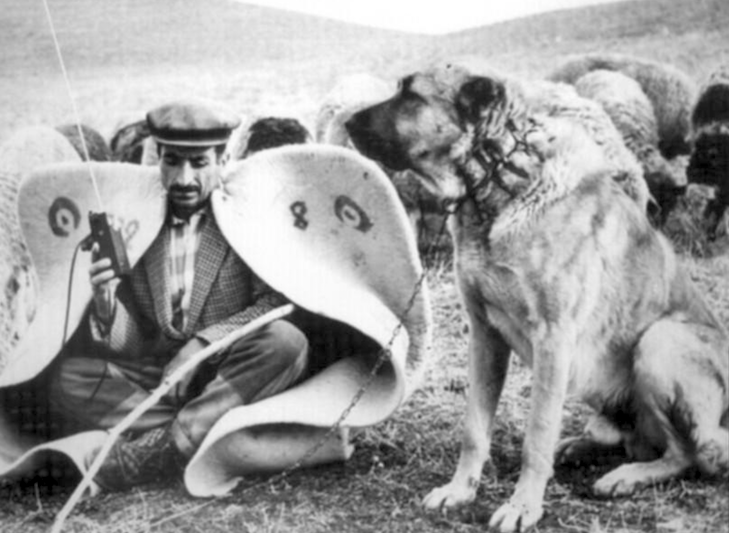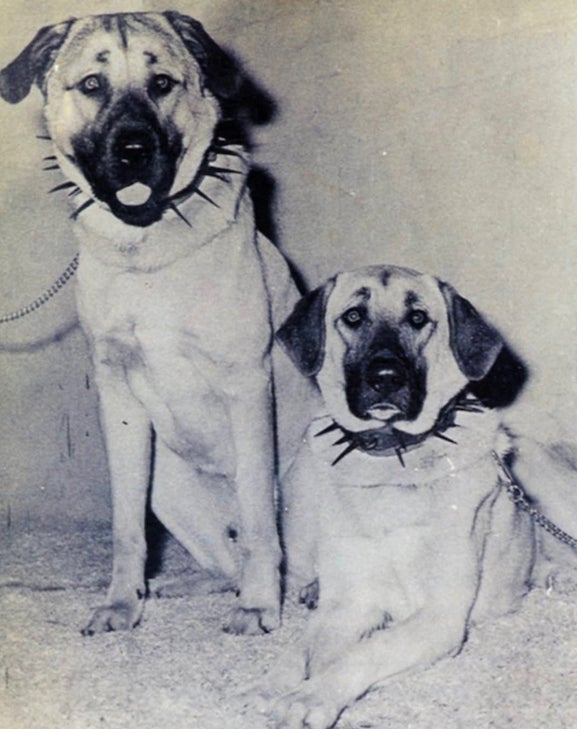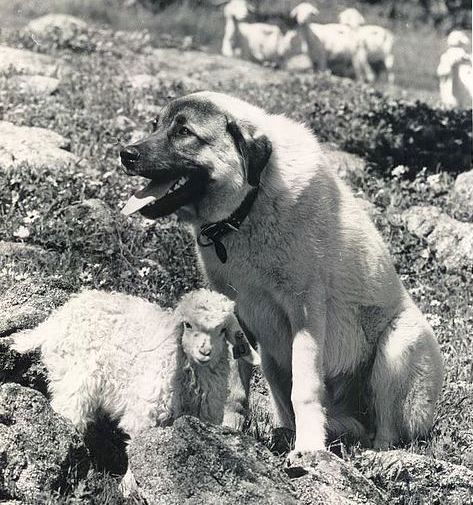
When you mention dogs that work with sheep, most of us instantly think of those that herd them: Imagine Border Collies and Australian Shepherds darting with flashes of merle and sable among a bleating crowd. These wily workers keep their charges from wandering off, and help move them from place to place.
But there’s another kind of dog that considers sheep to be the center of its universe: the livestock guardian dog, or LGD for short.
While the sheepdog is physically and mentally wired to ignite a sheep’s flight response – all the better to maneuver it to where it needs to go – the livestock guardian dog does quite the opposite: Living among the flock, often without a shepherd to guide it, the livestock guardian dog needs to keep the herd calm – all the while scanning the perimeter for hungry predators. After all, that fable about a wolf dressed in sheep’s clothing came from somewhere.
The American Kennel Club recognizes several livestock-guardian breeds, each associated with a particular country, from the Great Pyrenees of France to the Komondor and Kuvasz of Hungary. The breed we’re discussing today hails from a land far to the east of them: the Anatolian Shepherd Dog.
Turkey’s Livestock Guardian Dog
As its name suggests, this imposing, rugged dog comes from Turkey, a sprawling country to which those adjectives also apply. Because of its key geographic position straddling Europe and Asia, Turkey has always been a gateway between the two continents. Similarly, its livestock guardian dogs represent a transition between the large, almost mastiff-like breeds of Asia – including the Central Asian and Caucasian Shepherd dogs, neither of which is AKC recognized – and their smaller, comparatively more stylized European cousins. It’s generally believed that these dogs are all related, a far-flung family that originated with the Tibetan Mastiff, whose massive Asian descendants pushed ever westward, changing in appearance to suit the climate and terrain. What they all retained, however, was an unflappable temperament and a keen sense of responsibility for their charges.

Livestock guardian dogs often match the color of their sheep, which sometimes leads to the erroneous belief that this is for camouflage against predators. In fact, it’s quite the opposite: These canine guardians want their presence to be known, so that a potential predator thinks better of its dinner plan and slinks away to find an easier mark. Instead, livestock guardian dogs blend into their flocks so as not to unsettle the sheep: The more the dogs look like the animals they are protecting, the less likely they will be to startle and scatter them – an LGD’s worst nightmare.
The color of sheep isn’t just a matter of preference. Pure white sheep evolve in places where the availability and quality of water – which is needed to dye wool – is extremely good, as is the case in Western Europe. Further east, where conditions are harsher and resources more limited, the sheep are darker.
For its part, the Anatolian Shepherd Dog can be any color, reflecting the diversity of the herds it manages across the immense plateau that gives it its name. Traditionally, these dogs are fawn with black masks, but they can also be red, gray or blue fawn, biscuit or white, with brindle or pinto markings. In this very visual way, they are a transition between the largely white dogs of Europe and the wolf-colored breeds of Asia.
The Invaluable Protection of an Anatolian Shepherd Dog
In addition to its range of colors, another factor that sets the Anatolian Shepherd Dog apart from the European and Asian livestock-guardian breeds that bookend it is its silhouette. From its distinct tuck-up to its gradually arched loin to its slightly sloping pasterns, this is a breed whose Sighthound influence is obvious.
No one knows when these aerodynamic hunters were introduced into the Anatolian Shepherd gene pool – it could have happened centuries, even a millennium ago. Turkey’s relative proximity to the Middle East, where fleet-footed Sighthounds, from Salukis to Afghan Hounds, are numerous, offers a likely explanation for where they might have been obtained.
No matter how or when the Anatolian Shepherd evolved, the end result was unequivocally suited for its work. Large, powerful, and impressive, the breed is nonetheless agile enough to catch the errant gopher or rodent for its next meal. Because no matter how hungry he might be, the Anatolian would never think to harm the sheep whose protection constitutes his life work.

Those ovines, in turn, learned over countless generations how to read the body language of the Anatolian Shepherd to keep themselves out of harm’s way. When the dog perceives a potential threat, it will “make the wheel,” a very descriptive term that refers to the high, curled position of the dog’s tail. That rising tail is a signal to the sheep to find shelter or position themselves behind the dog, which will usually place itself well in front of the herd to separate it from the threat.
In Turkey, where the measure of a man’s wealth was the livestock he owned, a dog with the protective abilities of an Anatolian Shepherd was invaluable. Legend holds that anyone who killed one was required to compensate the owner with a pile of grain as high as the length of the dog if it were fully suspended above the ground from its tail.
The Anatolian Shepherd’s Introduction to the U.S.
If Anatolian Shepherd Dogs aren’t very well known among most American dog owners today, they were a complete unknown in the late 1930s, when a Turkish diplomat unexpectedly sent a pair to the U.S. government’s Sheep Dog Project, which was attempting to determine the best sheepdog breeds. When wartime rationing forced the program to close, federal officials fretted over what to do with the female’s dozen voracious puppies, fearing a breach of international diplomacy. In the end, all 14 dogs were auctioned off to a buyer from the Virgin Islands, and never heard from again.
After that rocky start, more of these Turkish transplants arrived in the 1950s through the ’70s, most of them accompanying military servicemen who had been stationed in Turkey, a fellow NATO ally. Since then, American ranchers in the West have used them quite effectively to protect not just sheep and goats, but also ostriches, alpacas, and even smaller poultry and toy-breed dogs.
Whether on the plains of Turkey or the mesas of Texas, the Anatolian Shepherd Dog never forgets its ancient roots – or its genetically ingrained mission to protect even the most vulnerable of its charges.

